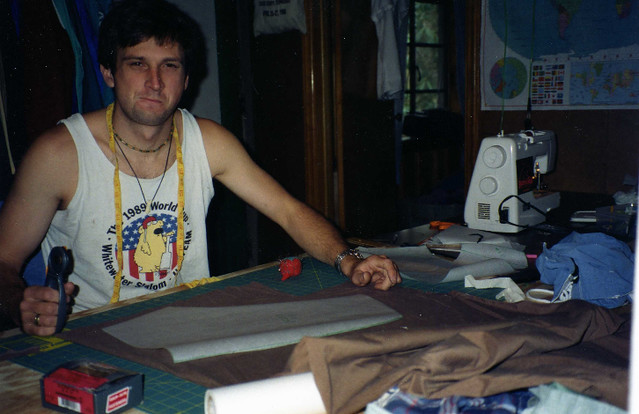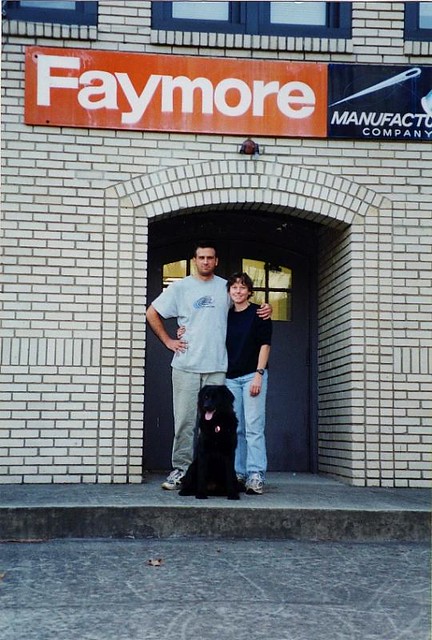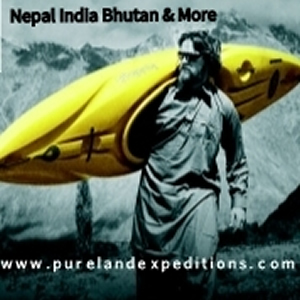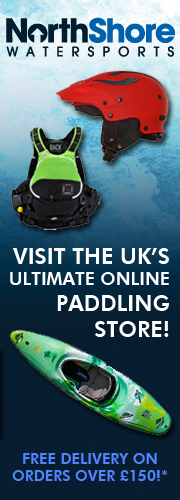John and Kara Weld are the founders of Immersion Research. I have owned and worn IR kit since around 2000. I firmly believe that IR make some of the best kayaking kit available. Having used the kit for so long it was fantastic to hear that John Weld had agreed to take part in the Unsponsored 2012 Q&A Series.
Tell us a little a bit about you accomplishments in the kayaking world
A brief bio: Started kayaking at age 11 in 1979. Went on to kayak through high school and college, and taught kayaking during the summers. Upon college graduation (English major, of course) I went to a split year of building composite slalom kayaks during the fall and winter (including the C2 that won gold at the Barcelona Olympics) and teaching kayaking during the summer. During that time I was stepping things up with expeditions, and was 2 time Gore Tex Shipton -Tilman Grant winner – once with a trip that crossed Baffin Island by whitewater kayak, and once for crossing Borneo by whitewater kayak. I started IR in my basement on a home sewing machine in 1997. I was making shorts for friends of mine. Within a year it was clear IR was a full time business, and the rest is history.

When and how did you first start paddling?
Some of those details are above, but I really learned the ropes at a summer camp called Valley Mill when I was age 13 to about 17. It was run by kayaking legend Tom McEwan who taught me (and countless other wimpy suburban kids) that there is a special pleasure to be found sleeping in the prickers in the rain on the side of a river.
What is your current location?
Confluence, Pennsylvania, on the Yough river.
What scares you the most?
Of course there are the fears we all have about family, health, etc. But I think the answer you’re looking for is from a paddler’s standpoint. Paddling-wise, big CFS scares me the most. I learned to paddle on the east coast of the US where 800 CFS is often flood stage. I see these guys paddling on the Congo with millions of CFS and I’m not sure there is any amount of money you could pay me to get out there. Even rivers like the Stikine seem impossibly huge to me. I think I could do it, but I would be totally out of my element. From a professional standpoint, I am always really scared of gigantic technical screw-ups that could ruin our business. We’ve been doing this for 16 years now and it hasn’t happened yet, but it still keeps me up at night.
What was your biggest hurdle in kayaking when you started out – finding people to paddle with, nailing the third end, lack of rivers etc?
I honestly can say that there was no real hurdles, besides my own laziness or ineptitude. I grew up in Washington DC where there were tons of paddlers, and we had a class V rapid 10 minutes from our house (Great Falls) that runs in some capacity every day of the year. West Virginia was only 3 hours away, and finding a crew to go paddle was never hard.

What has kept you in the sport?
The same thing that keeps most people out- My favorite times are when I’m on the side of a creek in the middle of nowhere, rooting through rhododendron bushes scouting a class 5 rapid in April. There’s snow on the ground, you’re scared, and cold- but at the same time it’s so exciting. It doesn’t get any better than that. I saw a bumper sticker once that said “My best vacation is your worst nightmare” and I think that sums it up. I like to paddle, but I also take pride in the toughness of it.
Who is your biggest source of inspiration within the paddling world (and why)?
Tom McEwan, hands down. He’s had the greatest influence on my life outside of my parents. I could write a novel on why this is, but suffice to say that Tom is the real deal. Most of the world’s famous explorers share these traits: driven, difficult, controversial, whip-smart, tough as nails and fearless. Tom possesses all of those qualities. The only reason kids don’t learn about him in grade school is that he was born too late, and was a kayaker rather than mountaineer or sailor
Given the choice where would want to paddle?
East Sierra Madres in Mexico.
Do you all consider yourself to be the craziest designer, coming up with the wildest designs; do you see yourself as pushing the design envelope?
Not anymore. In 1998-2001 when we were at the forefront of the youthful/ surfer look in paddling gear I would answer this differently, but our priories have changed a lot since then. Part of this is because our customer expectations have changed, but also because kayaking is a small sport and really pushing the envelope is a risky pursuit that rarely pays off. You can look at this problem using fabric colors as an example. Let’s say that we want to make a Tartan plaid dry top like Burton. Well, the fabric minimum on that print is going to be at least 1000 meters. At $15/meter (or more) you’re going to spend upwards of 20k on that fabric after paying for the print and set up charges. This is before you even make the garments. After putting it all together, you have $100k or more wrapped up in Tartan Plaid dry tops. For Burton, this is nothing. It’s pocket change. If this is the worst selling garment in their entire corporate history, it will still sell out. If we make this jacket and they don’t sell, the bank comes and takes my house and two cars. And despite that we have dozens upon dozens of requests for tartan plaid dry tops every year, I know that when it comes to spending $450 on a garment, people almost always go conservative. I realize that fabric colors are a pretty shallow example of pushing the design envelope, but most super-innovative design efforts have the same problem.
What was your biggest blunder?
There are many things that come to mind, but I’ll answer this as a business owner. The biggest blunder we made was thinking that whitewater kayaking was going to be as big as snowboarding. This would have been in the late 90’s, when the industry was exploding. It wasn’t “if” we were going to be a 15 million dollar a year gear maker, but “when”. You make many, many mistakes with that in your mind. I don’t think we were the only ones that made this error, but we were certainly one of them. Luckily we survived it.
Biggest success – personal, and commercial?
Once again – from a paddling perspective:
Personal – crossing Borneo – the worlds 3rd largest island – by kayak. We did it on budget, in exactly the amount of time that we said it would take. This very nicely hides how tough and miserable that trip really was.
Commercial – Taking the leap in 1997 and spending every penny I had on sewing machines, and then borrowing against our house to buy fabric. Churchill once said that you don’t truly learn the rules of the game until you bet way more than you can afford to lose. So true. Starting a business with no money is lot like peeling out into the current at the top of a serious class V rapid- there is a point where you decide to go for it, and no one can help you if things go terribly wrong.
What made you get in to designing kayak equipment? When did it all start?
I mentioned a little bit of this above, but the essence of it was that through teaching kayaking, I saw that my students were getting younger and younger every year, but the gear available was very bland. You could get your dry top in Black or Blue. Your pick. I saw an opportunity there. I should also take a minute here to mention that I run this business with my wife Kara. She’s been there since the beginning, and I have learned a 1000 times over the years that every good business needs a woman at the top. Without her, IR would be a joke. She’s no slouch in kayaking, either. She was National champion in slalom 3 times, and on the US team for 8 years.

Do you all know each other? Can Robert Peerson ring up Celliers Kruger and pick his brain?
I can’t speak for Robert and Celliers, but I’d like to think I am on great terms with our competitors. I usually spend at least 30 minutes or so every year at OR talking with Matt Porter from Kokatat, Stig and Tyler from Level 6, and Rich from Snapdragon. I usually try to catch up with Barney from Palm, and although I didn’t see him this year, I had a great time talking with Andy Knight last year. I think we all feel like we have a lot in common, and share a lot of the same joys and miseries of making paddling gear. We each have our own plans or tricks on making gear that we protect, but that is such a small part of what we do.
Do you wish boaters would treat your gear better? Or is it that you just have to make tougher stuff to put up with abusive paddlers?
Thats a good question. I can say unquestionably that customers are increasingly demanding better/stronger skirts, and drier dry tops, and dry suits. That’s actually a good trend for us – all of these problems can be fixed by making gear more expensive, and I’d rather sell 10 $200 skirts than 200 $10 skirts. The only problem comes when customers are shocked by the price.
How are materials and design process technology progressing our gear and our sport?
I think the most important changes in our sport occurred with boat designs- the first was the shift from glass to plastic in the 80’s, the next was the push towards 8-10 foot creek boats in the early 90s, and then the planing hull playboats in the mid 90’s. Each of those events changed the sport dramatically. In regards to gear, its been pretty incremental. Gear has not really held anyone back from doing what they need to do. It’s just getting more comfortable to do it.
Let us know what’s going on in the world of RnD. What is the next big thing?
Sharks with lasers.
John Weld
Immersion Research
808 Oden Street
Confluence, PA 15424
814-395-9191
twitter.com/irnews
IR kit is available in Europe via – http://www.immersionresearch.eu
Many Thanks John!



0 Comments
1 Pingback